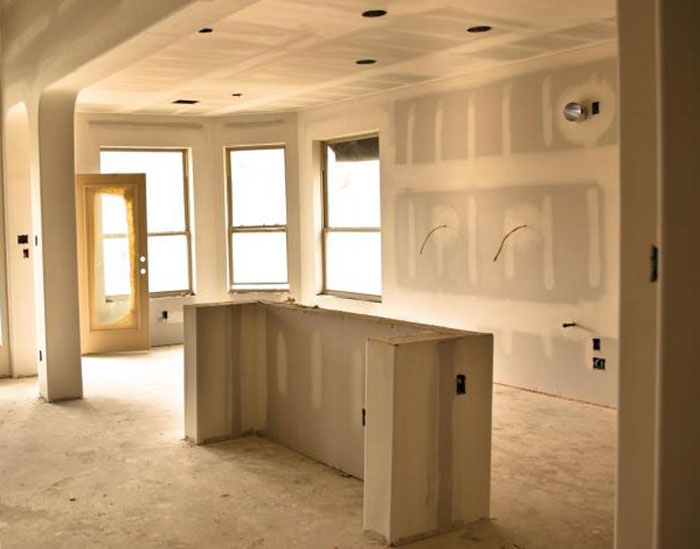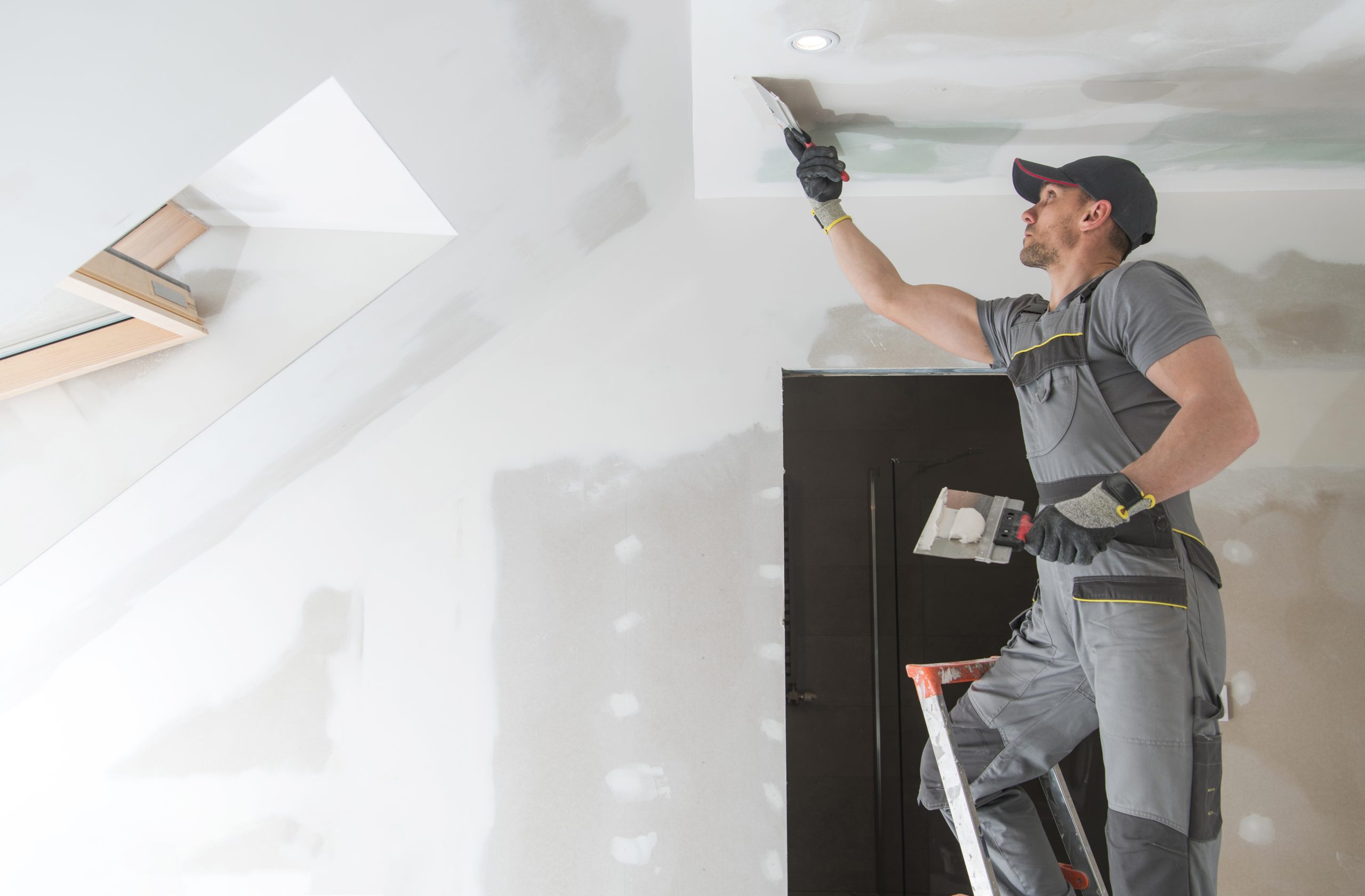Crucial Tips for Effective Drywall Repair Service and Installment Methods
Effective drywall repair and setup needs a cautious method. Recognizing the types of drywall and having the right devices is essential. Accurate measurements and proper strategies can significantly affect the end result. Lots of forget important steps like taping and fining sand, which can make or damage the final appearance. As tasks advance, usual difficulties might arise that call for attention. Exploring these pointers can bring about a much more successful and sleek finish.
Recognizing Different Sorts Of Drywall
Recognizing the numerous kinds of drywall is vital for any kind of successful fixing or setup job. Drywall, generally recognized as plaster board, comes in a number of varieties customized for specific applications. Criterion drywall is the most widely utilized kind, perfect for basic interior walls and ceilings. Moisture-resistant drywall, usually eco-friendly in color, is designed for areas susceptible to moisture, such as shower rooms and kitchen areas. Fire-resistant drywall, typically tinted pink or purple, is engineered to hold up against greater temperature levels and is typically used in garages or near heating systems. In addition, soundproof drywall aids lower noise transmission, making it ideal for multi-family homes or tape-recording workshops. Specialty drywall, like cement board, is used in wet areas like showers or tub surrounds. Comprehending these kinds assists in choosing the right product for every project, guaranteeing durability and effectiveness out of commission or brand-new installations.
Vital Devices for Drywall Repair Service and Setup
Having the right tools is necessary for efficient drywall repair work and installation. A high quality energy knife is crucial for reducing drywall sheets specifically. A drywall T-square aids assure straight edges, while a taping blade is needed for using joint compound efficiently over joints. Additionally, a drywall saw permits eliminating harmed sections or suitable drywall around fixtures.
For hanging drywall, a power drill with drywall screws is vital, as it enables fast and secure installation. A degree is also vital to validate that the drywall is straight and appropriately aligned. A fining sand block or post sander is crucial for raveling joint compound once it has dried. Lastly, a gauging tape is important for accurate measurements, avoiding waste and making certain a proper fit. Furnished with these tools, people can deal with drywall tasks properly, resulting in professional-looking results.
Step-by-Step Overview to Fixing Holes and Cracks
When resolving openings and fractures in drywall, having the right tools and materials is essential for an effective repair work. This guide details the required items and supplies a clear, detailed process to effectively recover the surface. Comprehending these elements will certainly assist ensure a smooth finish and lasting results.
Tools and Materials Needed
A well-equipped toolkit is important for effective drywall fixing and setup. Secret devices consist of an utility knife for cutting drywall, a measuring tape to assure exact sizing, and a drywall saw for larger holes. A putty blade is vital for applying joint substance efficiently, while a sanding block or post sander assists accomplish a seamless finish. For patching, a roll of fiberglass fit together tape or paper tape is essential to strengthen joints. In addition, a drill and screws are needed for safeguarding brand-new drywall items. Important materials consist of joint substance, guide, and paint to complete the repair work. Having these devices and materials handy assures a smoother, much more reliable repair work procedure, generating professional-looking outcomes.
Repair Refine Actions
Repairing holes and splits in drywall requires an organized strategy to guarantee a smooth finish. First, the location bordering the damages should be cleansed completely to eliminate dust and particles. Next off, for small splits, a putty knife is used to apply a joint compound uniformly over the area. For larger openings, a spot is required; the damaged section is removed, and a new piece of drywall is suited area, protected with screws. When the spot is in position, joint compound is used to blend the edges. After drying out, sanding the location smooth is important. The fixed surface area needs to be keyed and painted to match the bordering wall surface, guaranteeing a low-profile fixing.
Techniques for Putting Up Drywall Panels
Mounting drywall panels requires mindful planning and precise execution to assure a professional and smooth surface. It is essential to determine the wall space properly and cut the panels to fit, ensuring that they straighten with the studs. Positioning the panels flat is generally suggested, as this can boost the architectural honesty and decrease the variety of seams.
Using drywall screws, installers should secure the panels every 16 inches along the studs, guaranteeing a company hold. It is essential to stay clear of overdriving the screws, which can harm the paper surface area. For corners and sides, utilizing an energy knife enables tidy cuts and a tight fit.

Ending Up Touches: Taping, Mudding, and Sanding
As soon as the drywall panels are safely in position, the next important step entails the complements of taping, mudding, and sanding. Taping is necessary for developing a smooth change in between panels and concealing joints. A top quality drywall tape, either paper or fiberglass mesh, should be applied over the joints, ensuring it sticks effectively to the mud that will be applied next.
Mudding, or using joint compound, adheres to the taping procedure. This compound fills spaces and ravel the surface. A first coat needs to be used kindly, feathering the sides to mix with the drywall. After the first coat dries, succeeding layers might be needed for a flawless finish.
Lastly, fining sand is required to achieve a smooth surface. A fine-grit sandpaper must be made use of to gently smooth out any kind of imperfections. Treatment should be taken to stay clear of over-sanding, which can harm the drywall - drywall contractors. Effectively carried out, these ending up touches create an expert look ready for painting
Tips for Preserving Your Drywall After Installation
Maintaining drywall after installation is vital to preserving its look and architectural honesty. Routine cleaning is essential; dirt and dust can build up, so mild wiping with a damp towel is recommended. Property owners must also evaluate for any indicators of dampness or mold and mildew, particularly in high-humidity locations like washrooms and cooking areas. If any type of damages takes place, it is essential to address it without delay to stop further problems.
Using furniture pads can aid stop scrapes or damages from heavy products. In addition, repainting the drywall with a top quality, washable paint provides an added layer of security and makes future cleansing simpler. Avoid using rough cleansers or tools, as these can damage the surface. Keeping a steady indoor climate with proper humidity levels will assist avoid breaking or buckling over time. By following these suggestions, one can guarantee that drywall continues to be in excellent condition for years ahead.
Frequently Asked Questions
For How Long Does Drywall Take to Fully Dry After Setup?

Can I Set Up Drywall Over Existing Drywall?
Yes, drywall can be set up over existing drywall, yet it is necessary to guarantee the underlying surface area is protected and effectively prepared. This approach can boost insulation and reduce installation time, though it may include weight.
What Is the most effective Way to Soundproof Drywall?
The very best way to soundproof drywall includes utilizing specialized soundproofing products, such click here as resilient channels, acoustic caulk, and sound-dampening drywall. These techniques successfully minimize audio transmission in between areas, enhancing overall acoustic performance in living rooms.
Exactly how Do I Choose the Right Drywall Thickness?
To pick the best drywall thickness, take into consideration the application and area. Standard household walls typically use 1/2 inch, while ceilings or specialized locations may require 5/8 inch for added strength and soundproofing capabilities.
Are There Eco-Friendly Drywall Options Available?
Yes, eco-friendly drywall alternatives are readily available. These consist of items made from recycled materials, gypsum boards with reduced unpredictable natural substances (VOCs), and those using sustainable production procedures, supplying environmentally-conscious choices for building and construction and improvement jobs.
Having the right tools is necessary for reliable drywall fixing and installation. For hanging drywall, a power drill with drywall screws is essential, as it allows fast and safe installation. Key devices include an utility knife for reducing drywall, a tape step to guarantee exact sizing, and a drywall saw for larger holes. Yes, drywall can be set up over existing drywall, however it is vital to assure the underlying surface is safe and secure and properly prepared. The ideal way to soundproof drywall entails making use of specialized soundproofing materials, such as resistant networks, acoustic caulk, and sound-dampening drywall.